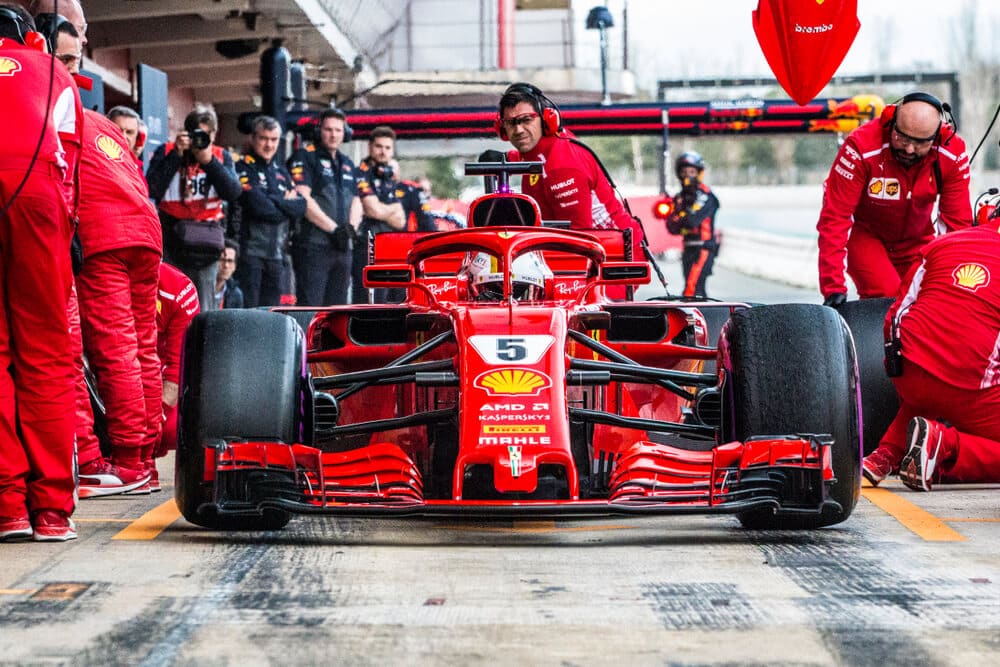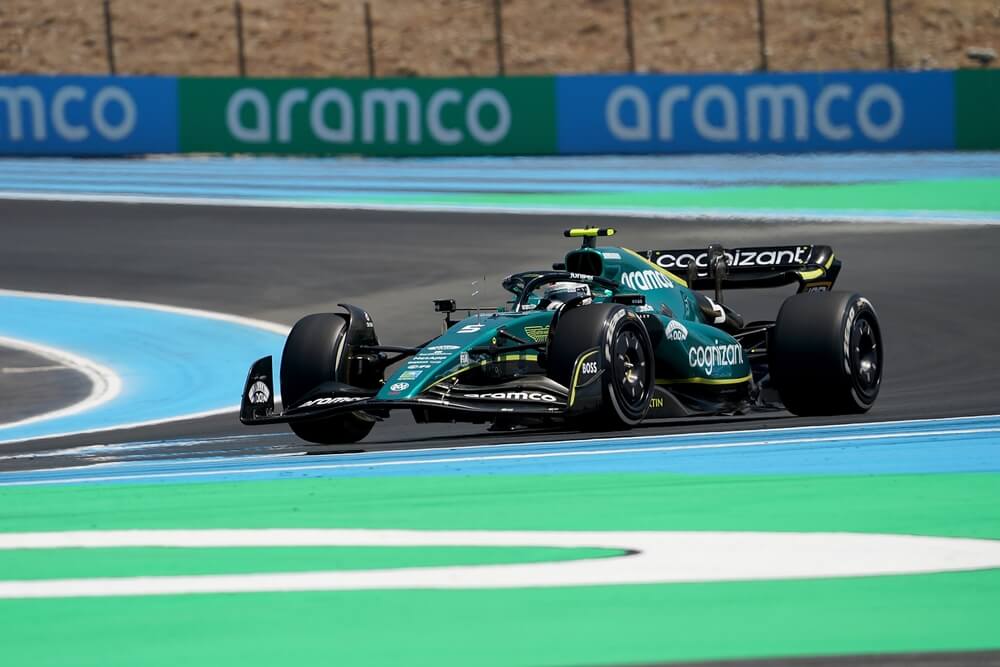With the top speed of a Formula 1 car pushing up to an astounding 360 km/h, drivers are constantly exposed to extreme risk. Given this fact, it may be surprising that these vehicles do not come equipped with airbags like regular cars do. After all, airbags are designed to limit the impact of accidents and save lives. So why aren’t F1 cars outfitted with airbags?
In this article, we will explore the various factors that make airbags impractical for F1 cars and discuss alternative safety measures that are being taken to protect drivers.
Table of Contents
Watch this video to learn more about why F1 cars don’t have airbags.
Why Don’t F1 Cars Have AirBags?
Formula 1 cars are engineered to be one the fastest vehicles on the planet, capable of reaching speeds in excess of 360 km/h. With such extreme speeds, these cars are subjected to a higher degree of risk than regular cars.
Safety is an important consideration for this type of racing and yet, F1 cars do not come equipped with airbags. Airbags are typically found in regular vehicles and provide a cushion against impact in the event of an accident.
F1 cars don’t come equipped with airbags due to the fact that other safety measures are better suited for such extreme speeds such as monocoque. Additionally, Drivers wear helmets and a HANS(Head and Neck Support) device, which provides head and neck support, helping to prevent deadly impacts in the event of a crash.
The nature of F1 racing
Let’s take a closer look at the sport of Formula 1 racing and why airbags are not suitable for such environments.
Why F1 racing is different from normal driving
F1 racing is an entirely different breed of driving compared to normal road vehicles. Unlike the average driver, F1 drivers are subjected to intense physical and mental stress as they battle extreme G-forces around tight corners and accelerate to speeds of over 350km/h.
F1 drivers require an incredible amount of training and discipline to stay on top of their game. They also must have a greater understanding of vehicle dynamics, along with better physical fitness, strength, and muscle tone.
In comparison, normal drivers typically cruise along with little to worry about; for an F1 driver, the stakes are much higher, and they must be mindful of their tires, fuel, and lap times while also finding the optimal grip on the track.
Hence, the concept of using airbags in F1 cars is not suitable due to the intense nature of the sport. Normal vehicles are equipped with airbags for basic safety measures, as they are not subjected to the same extreme conditions that F1 drivers face.
Types of crashes that can occur during F1 races
Since 1950, Formula One has seen a staggering number of life-threatening accidents. During Grand Prix weekends alone, 32 drivers have tragically lost their lives. This number is even higher when including test sessions and non-championship events, with 12 and 7 fatalities, respectively.
These appalling figures are a grim reminder of the tremendous risks F1 drivers face when they take to the track. Crashes in F1 are often unpredicted and can happen in less than a fraction of a second. They vary from low-speed, mild collisions to high-speed impacts that sometimes result in the car being ripped apart. Here are some of the instances in which a crash can occur:
- Braking errors – where the driver fails to slow down enough in time and hits another car or wall.
- Understeer – where the driver fails to turn enough in a corner and slides off the track.
- Oversteer – where the driver turns the car too much and loses control.
- Tire blowouts – due to excessive heat, which can cause the car to spin out of control.
- Car malfunctions – where a mechanical fault causes the car to suddenly slow down, lose power or spin out of control.
- Collisions with other cars – due to drivers being too close together or misjudging another driver’s speed.
The unique challenges of designing safety features for F1 cars
Given the intense environment, designing safety features for F1 cars has always been a tricky affair. Factors such as driver visibility, the weight of safety equipment and aerodynamics all have to be considered when integrating safety features into the design.
Incorporating safety features into an F1 car can have a major effect on aerodynamics. To reduce drag, the car must be as slim and sleek as possible. On the other hand, safety features such as airbags require bulkier components that can disrupt airflow.
Sometimes these safety features can lead to reduced performance, so engineers must find a balance between safety and speed. This means that the engineers must be creative in their designs, often using lighter materials and cleverly integrating safety components into other parts of the car.
The role of the driver
Let’s take a look at the role of the driver when it comes to safety on the track. Despite all of the advancements in technology and engineering, it is still important for drivers to take responsibility for their own safety.
How F1 drivers are trained and equipped to handle crashes
Ever wondered how F1 drivers remain safe even in catastrophic crashes? Though modern F1 cars are incredibly sturdy and equipped with cutting-edge safety features, drivers still need to be well-trained and prepared for any accident.
They train like mad to develop their reaction speed, reflexes, and muscle memory to react quickly in a split-second emergency. They are prepared not only physically but also mentally, to remain calm and composed in the face of danger.
Moreover, the road to F1 is not an easy one, and the drivers who make it are some of the most talented and dedicated athletes in the world. From a young age, they begin their journey in karting and other junior categories to refine their skills. This means that when they reach F1, they’ve already seen and experienced enough that they know how to handle extreme driving situations, providing them with an edge in the race.
In addition to their training, F1 drivers are equipped with the best safety gear. The modern Formula 1 car boasts virtually indestructible survival cells, roll bars, and fuel tanks made from bulletproof material to prevent explosion in the event of a crash.
Importance of driver skill and reflexes in preventing accidents
A study has shown that F1 drivers are capable of reacting nearly three times faster than the average person, making decisions in a mere 0.2 seconds while traveling at speeds in excess of 200 mph. These lightning-fast reflexes and skills allow them to anticipate and respond to any situation on the track with remarkable precision.
This helps them not only to stay ahead of their competitors but also to avoid accidents and collisions. Even in the direst situations, F1 drivers are able to react quickly and take necessary action to prevent major destruction on the track.
Protective gear that drivers wear during races
In addition to their incredible skill and reflexes, F1 drivers also wear protective gear when racing. This includes a specialized racing suit crafted from armored fibers such as Nomex, which is extremely heat-resistant and strong. They also wear specialized shoes, socks, gloves, and balaclava.
Additionally, drivers wear custom-made helmets designed by approved companies to fit the exact dimensions of their heads, along with goggles or spectacles for eye protection. If needed, drivers may also be allowed to wear contact lenses for better vision during races. All of this helps them stay safe and prevent major incidents on track.
Even though airbags are commonly used in cars to provide extra safety and protection during an accident, this technology is not suitable for F1 cars. Let’s take a closer look at why this is so.

The limitations of airbags
Even though airbags are commonly used in cars to provide extra safety and protection during an accident, this technology is not suitable for F1 cars. Let’s take a closer look at why this is so.
How airbags work in normal cars
In normal cars, airbags are designed to deploy in a split second upon impact. They inflate with the help of nitrogen gas or sodium azide, depending on the car’s model, and cushion the occupants from serious injury during an accident.
If we’re talking about normal cars, where the maximum speed is usually less than 120 mph, airbags can provide an effective layer of protection and save lives. A study found that airbags can reduce driver deaths by 29% and fatalities among front-seat occupants aged 12 or above by 32%.
However, this is not the same when it comes to F1 cars.
Why airbags may not be effective in F1 cars
Airbags may not be a suitable form of protection for Formula 1 (F1) cars because of the various limitations that come with them. F1 cars are designed to be lightweight and aerodynamic, meaning that they can’t afford the extra weight airbags require. Furthermore, drivers are highly experienced and well-trained – reducing the likelihood of an accident occurring in the first place.
Over time, racecars have also undergone numerous modifications to make them more durable and safer, further eliminating the need for airbags. Additionally, airbags are designed to deploy in a split second upon impact, but this can be dangerous for F1 cars as they often experience hits and bumps during a race hence they can be triggered without the driver’s input leading to distractions.
Ultimately, airbags are effective in preventing highway accidents, yet they are useless when it comes to racing events like Formula 1 or NASCAR.
The potential dangers of airbags in F1 crashes
Not only would airbags be ineffective in preventing crashes, but they could also prove to be dangerous. This is due to the high speed at which F1 cars travel and their inability to stop or slow down quickly.
Additionally, airbags could block drivers’ vision during a race, which could lead to an even more dangerous situation. This is because F1 cars are constantly navigating tight corners and sharp turns – if drivers don’t have a clear line of sight, they may be unable to react quickly enough to avoid any obstacles on the track.
Moreover, airbags in F1 cars may be unable to keep up with the high G-forces experienced at such speeds. This would mean that they would not be able to cushion drivers effectively if an accident were to occur – increasing the chances of severe injury or even death.
Alternative safety features
So, if not airbags, what safety features are used in F1 cars? Let’s take a look.
Various safety features that are used in F1 cars
Formula 1 racers are heavily protected through a variety of safety features. This includes the car, which has been designed to withstand high levels of force and an energy-absorbing chassis, as well as improved fuel tanks that help prevent fires in crash scenarios.
Additionally, drivers must wear protective gear such as helmets and HANS devices to help minimize head movement in accidents and reduce the risk of neck or spinal injuries.
The halo device is also mandatory for all Formula 1 racer, providing an extra layer of protection with a structure that wraps around their heads and protects them from debris during crashes.
Finally, the driver has to wear fireproof clothing, including socks, boots, an undershirt, underwear, a balaclava, a race suit, and gloves. This is extremely important to ensure the driver’s safety.
Ongoing efforts to improve F1 car safety
Formula 1 teams and officials continue to work on improving the safety of F1 cars. This includes introducing more rigid and lightweight materials, strengthening engine parts and brakes, as well as making changes to the track design in order to reduce the chances of an accident occurring.
In addition, the FIA (the governing body of the sport) is constantly monitoring and testing new safety features in order to better protect racecar drivers.
Additionally, the implementation of data recorders has been paramount to the safety improvements in F1 racing. These devices are able to capture crucial data that is then used to inform decisions regarding the design of cars, tracks, and safety gear, thus helping reduce risks on the racetrack.
Conclusion
Airbags may be effective in preventing highway accidents, but they are not suitable for F1 racing due to the risks they could pose.
Instead, F1 teams and officials make use of various safety features such as improved car design, protective gear, and data recorders to ensure the highest level of driver protection.
All of these efforts combined help to reduce the risk of accidents in F1 racing and keep drivers safe on the track. The safety of F1 drivers continues to be a priority, and through ongoing research and development, teams are constantly looking for new ways to make the sport even safer. This is an important step towards ensuring that Formula 1 remains one of the safest motorsports in the world.
Article sources
Learn more about Formula One
Want to learn more about F1? Then visit our Formula 1 glossary and dictionary.




